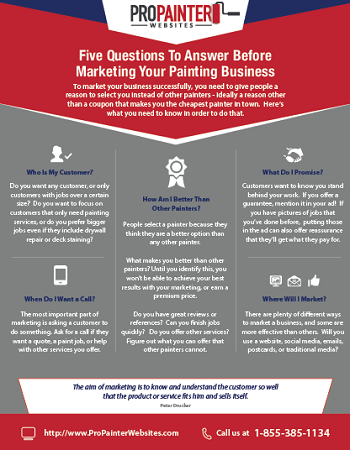Check Out The Role Of Seasonal Factors In The Success Of Commercial External Paint And Discover The Best Times To Protect Long-Term Outcomes For Your Task
Check Out The Role Of Seasonal Factors In The Success Of Commercial External Paint And Discover The Best Times To Protect Long-Term Outcomes For Your Task
Blog Article
Authored By-Doherty Decker
When you're intending a commercial exterior painting task, seasonal variables can make or damage your outcomes. You'll intend to consider how temperature and humidity effect paint application and drying out times. Selecting the ideal period can guarantee your paint adheres appropriately and lasts longer. However which periods are truly the best for this sort of job? Let's check out the key elements that can impact your job's success.
The Effect of Temperature on Paint Application
When you're preparing a business exterior paint project, the temperature level can considerably influence just how well the paint adheres and dries out.
Preferably, you want to repaint when temperature levels range in between 50 ° F and 85 ° F. If it's too cool, the paint might not cure effectively, bring about concerns like peeling or splitting.
On the other side, if it's also hot, the paint can dry out as well swiftly, preventing correct bond and causing an unequal surface.
You need to also take into consideration the time of day; early morning or late afternoon provides cooler temperature levels, which can be a lot more favorable.
Constantly examine the manufacturer's referrals for the certain paint you're utilizing, as they usually give support on the optimal temperature array for optimum outcomes.
Humidity and Its Result on Drying Times
Temperature level isn't the only ecological element that influences your commercial outside paint task; moisture plays a considerable role too. cabinet painters near me can reduce drying out times significantly, influencing the overall top quality of your paint work.
When the air is saturated with dampness, the paint takes longer to heal, which can bring about concerns like bad adhesion and a greater danger of mildew development. If please click the next post on a particularly moist day, be prepared for extended delay times in between coats.
It's vital to check local climate condition and plan as necessary. Ideally, go for moisture degrees in between 40% and 70% for optimal drying out.
Keeping painting during winter in mind ensures your task stays on track and supplies a long-term surface.
Best Seasons for Commercial Outside Paint Projects
What's the most effective season for your industrial exterior paint jobs?
Spring and early autumn are commonly your best options. During these seasons, temperatures are moderate, and moisture levels are often lower, creating perfect conditions for paint application and drying out.
Stay clear of summertime's intense heat, which can create paint to completely dry as well promptly, leading to inadequate bond and surface. Similarly, winter season's chilly temperatures can prevent correct drying and curing, risking the long life of your paint task.
Go for days with temperature levels in between 50 ° F and 85 ° F for optimum results. Bear in mind to examine the regional weather prediction for rainfall, as damp problems can destroy your job.
Preparation around these aspects guarantees your painting job runs efficiently and lasts much longer.
Conclusion
Finally, planning your commercial external paint tasks around seasonal considerations can make a considerable difference in the end result. By scheduling work during the excellent temperature levels and moisture degrees, you'll guarantee much better adhesion and drying out times. Remember to watch on neighborhood weather prediction and choose the correct time of year-- spring and very early fall are your best options. Taking these actions will help you achieve a long lasting and specialist finish that lasts.
